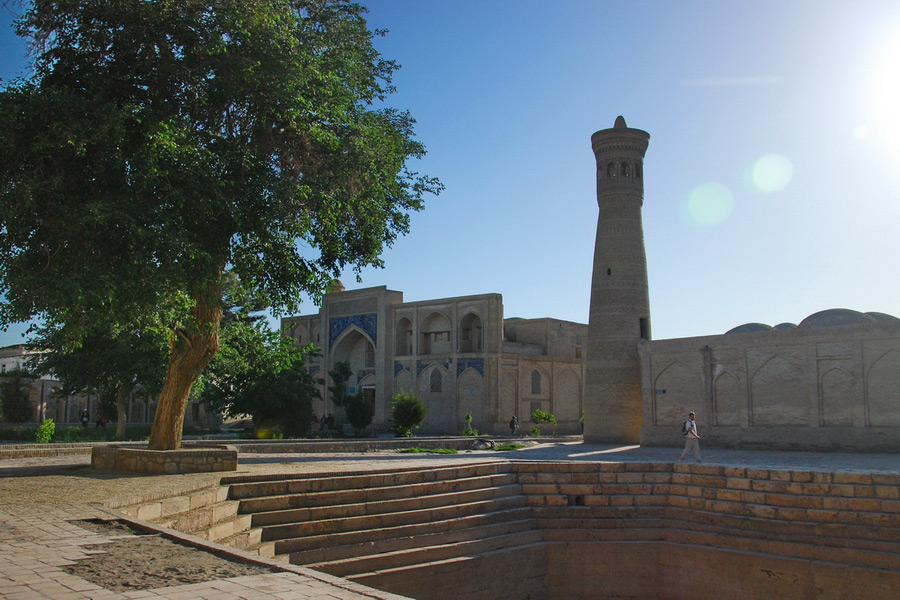Khoja Gaukushan Ensemble, Bukhara

The Khoja Gaukushan (Khoja Gaukushon) Ensemble is a significant architectural monument located in the heart of Bukhara, recognized as one of the city’s largest religious complexes. It comprises a madrasa, mosque, and minaret, all of which were constructed in the 16th century. The ensemble’s history began in the 1570s with the construction of the madrasa, followed by the addition of the Friday mosque and a towering minaret standing at 19.5 meters. Due to its impressive scale, the minaret is often compared to Bukhara’s famous Kalon Minaret.
The Khoja Gaukushan complex was built with funds provided by Sheikh Khoja Saad (also known as Khoja Sād), a prominent Juybar sheikh and one of the wealthiest landowners of his time. Two of the ensemble’s structures were named in his honor: the Khoja Mosque and the Khoja-Kalon Minaret, the latter translating to "Great Khoja".
The name "Gaukushan", which was given to the entire complex, translates to "bull killer." This name refers to the area’s historical function, as it was once the site of a slaughterhouse.
Located next to the Khoja Gaukushan Ensemble is an artificial pond, or hauz, which was originally used as a source of drinking water. However, in the 1930s, the hauz was drained due to concerns about the spread of disease. In recent years, the pond has been refilled, restoring its historical and aesthetic harmony with the ensemble.
The Khoja Gaukushan Ensemble is a true masterpiece of Bukhara’s architectural heritage, offering visitors a glimpse into the religious and cultural significance of the late medieval period. It remains one of the city’s most captivating religious complexes that has survived to the present day.

